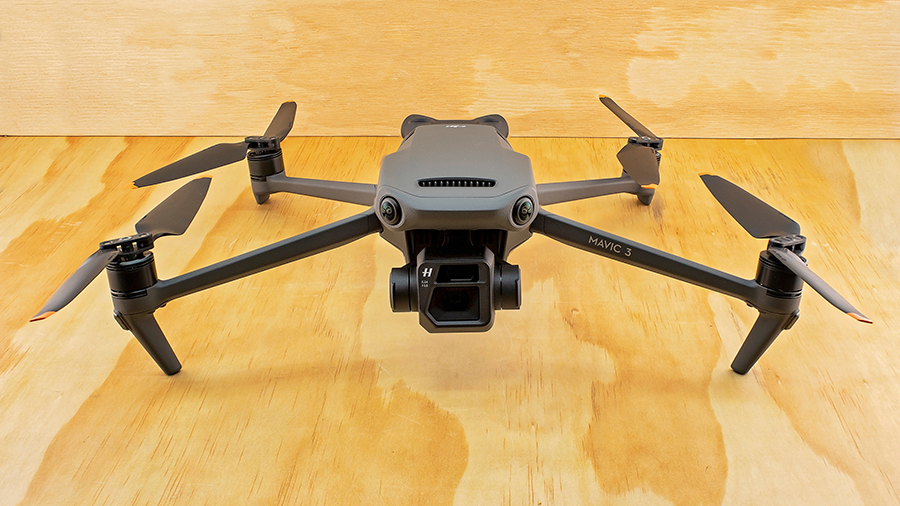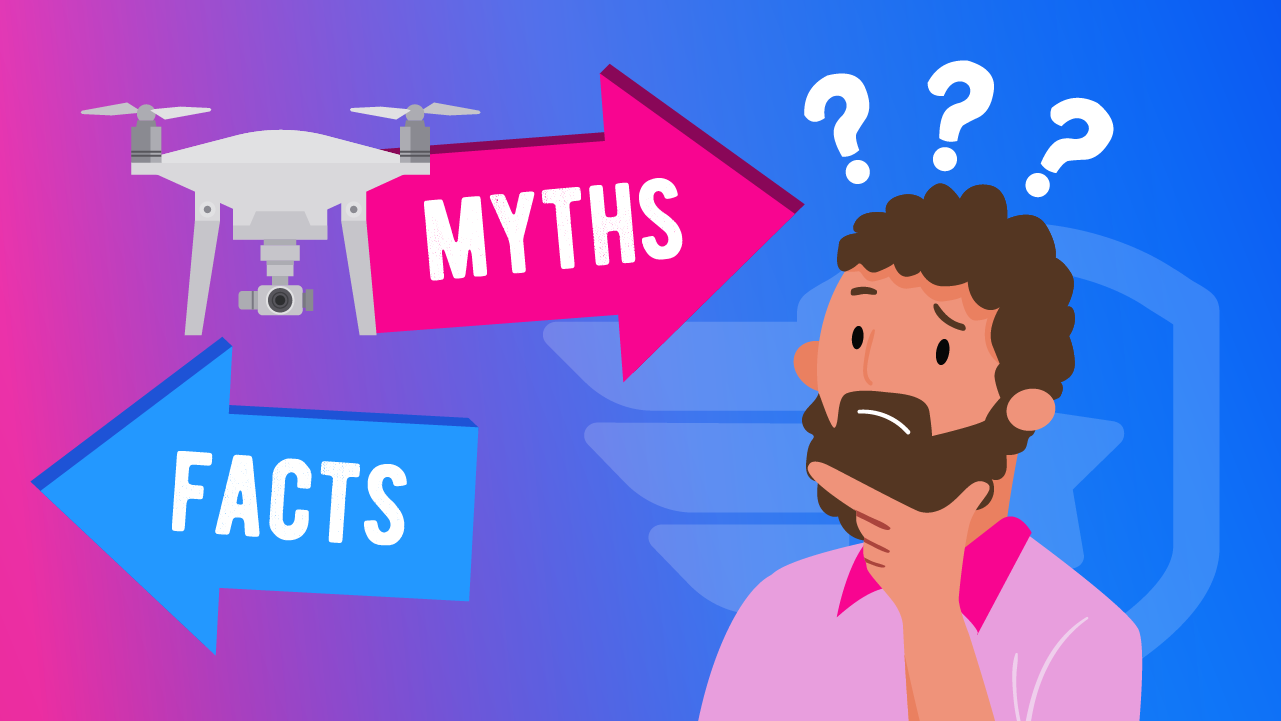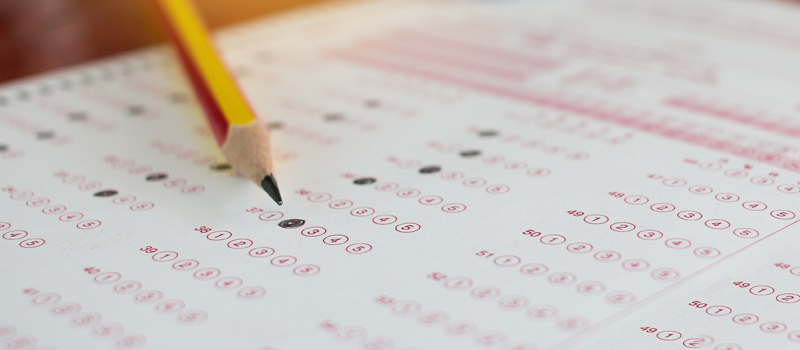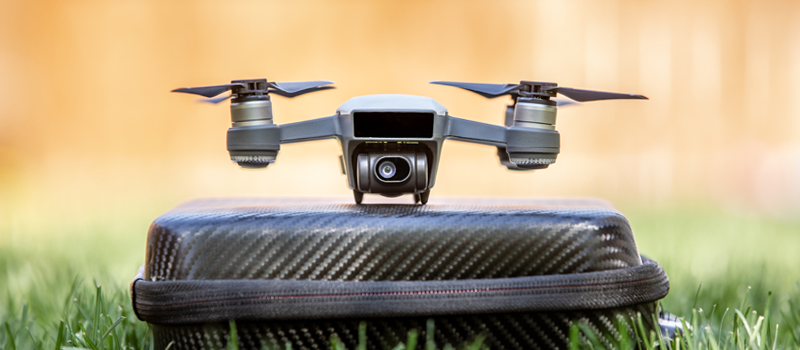Commercially available drones are designed chiefly to be small and light. While this makes them more appealing for easy storage and transport, it almost always means compromising on battery capacity and conversely, flight time.
Even with all the fancy drones, we have nowadays, it is rare to find one that can stay airborne for more than 30 minutes on a single battery cycle. If you don’t want to have to deal with frequent battery changes, then check out this list of the best drones available today that have flight times longer than 30 minutes.
1. DJI Mavic 3
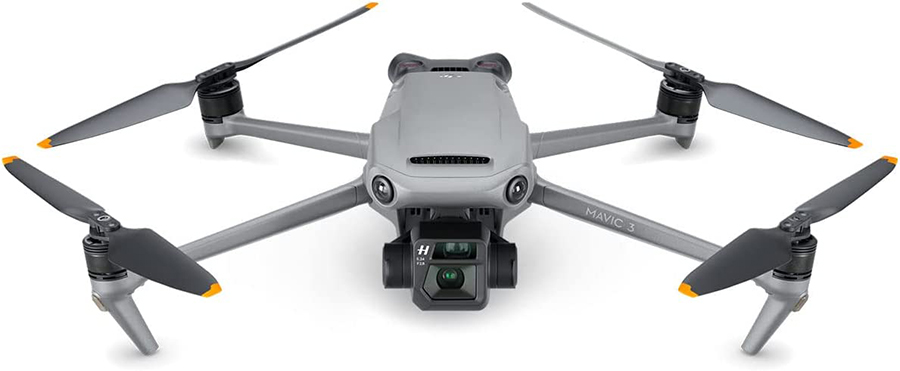
Key features
| Key features | |
| Flight time | 46 minutes |
| Battery capacity | 5000 mAh |
| Battery weight | 335.5 grams |
| Takeoff weight | 895 grams |
| Video resolution | 5.1K @ 50 fps / 4K @ 120 fps |
| Camera features | Adjustable aperture (f/2.8 to f/11), AEB, 200 Mbps bitrate, 28x hybrid zoom on telecamera |
| Flight and camera modes | ActiveTrack 5.0, MasterShots, Panorama, Hyperlapse, Quick Shots |
| Safety features | Omnidirectional obstacle avoidance with APAS 5.0, GeoFencing, ADS-B |
Pros
- Ultra-portable design
- Professional-grade camera
- Obstacle avoidance system
Cons
- Very expensive
- Comes with automatic GeoFencing
Coming in at the top of the list is the Mavic 3, the latest and best addition to the DJI Mavic series so far. The Mavic 3 is a little bigger and heavier than previous Mavic models. This gives it more room for a high-capacity battery that lets the drone fly for up to 46 minutes. This number may decrease to around 37 minutes in windy conditions, but that number is still well within our limit for drones that have long flight times.
A standout feature of the Mavic 3 is the fact that it comes with two image sensors – a Micro Four Thirds sensor that can shoot 5.1K videos at 50 fps, and a ½-inch sensor capable of 28x hybrid zoom. The Hasselblad camera makes this one of the best camera drones on the market today. This is an exceptional distinction, considering that all these features are housed in an ultra-portable body.
The Mavic 3 has obstacle avoidance sensors in all directions, aided by the APAS 5.0 system that can detect objects up to 200 feet away and steer the drone to avoid them automatically.
Pricing for the Mavic 3 starts at just above $2000. This can go up to around $5000 if you want the Cine version with a built-in SSD and compatibility with Apple ProRes. This price point pretty much puts it out of contention for casual users. Instead, this is a good option for professional drone photographers who also put a premium on portability.
Since this is a DJI drone, it naturally comes with the standard GeoFencing feature. This can be bothersome if you frequently fly within controlled airspace. This might not necessarily be a bad thing, however.
2. DJI Mini 3 Pro with Intelligent Flight Battery Plus
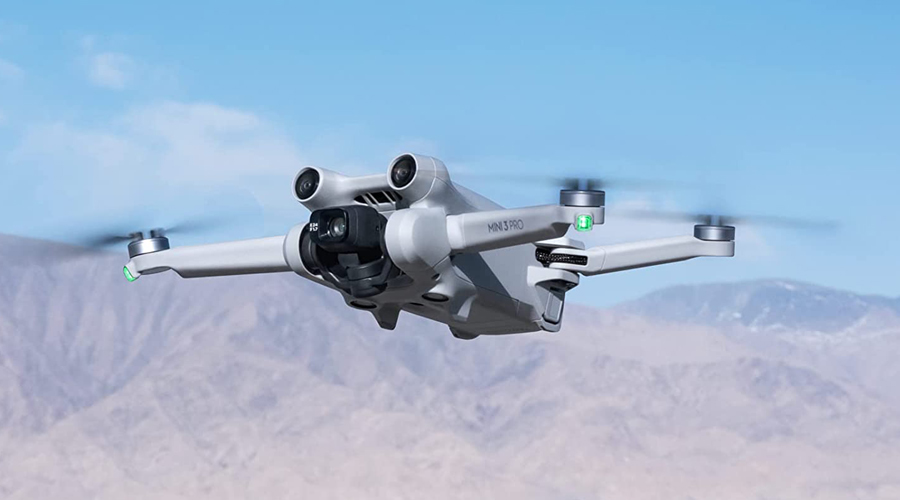
Key features
| Key features | |
| Flight time | 47 minutes |
| Battery capacity | 3850 mAh |
| Battery weight | 121 grams |
| Takeoff weight | 290 grams |
| Video resolution | 4K/2.7K/1080p @ 60 fps / 1080p@120fps |
| Camera features | HDR, AEB, Up to 16x digital zoom, Fixed aperture (f/1.7) |
| Flight and camera modes | Active Track, HyperLapse, Point of Interest, Quick Shots |
| Safety features | Three-way obstacle avoidance, GeoFencing |
Pros
- Ultra-portable design
- Professional-grade camera
- Obstacle avoidance system
- Unique portrait mode
Cons
- Weighs over 250 grams
- Expensive
- Comes with GeoFencing
- No ADS-B feature
The Mini 3 Pro is the latest member of the DJI Mini series of drones that weigh less than 250 grams. There is an important disclaimer we have to start with, though. The Mini 3 Pro is only being considered here if it comes with the larger and heavier Intelligent Flight Battery Plus. Unfortunately, this brings the weight of the Mini 3 Pro over the 250-gram limit, which means that it will have to be registered with the FAA.
With the Intelligent Battery Flight Plus, the Mini 3 Pro is rated for up to 47 minutes of flight time. This is a huge upgrade to the 34-minute flight time with the standard battery.

Even with the larger battery, the Mini 3 Pro is still a wonderfully compact and lightweight drone that is perfect for those who are always on the go. Despite the small size, the Mini 3 Pro comes with an impressive camera that can capture 4K videos at 60 fps and up to 48 MP stills with a Quad Bayer Sensor. It also comes with a three-axis mechanical gimbal for image stabilization.
The Mini 3 Pro has obstacle avoidance sensors in the forward, rear, and downward directions that are supported by the APAS 4.0 automatic navigation system. It does not have an ADS-B feature but does have a GeoFencing feature that we have come to expect with modern DJI drones.
At around $900 for the base drone bundle, the Mini 3 Pro is not exactly a budget-friendly drone. It also comes with an automatic GeoFencing feature that may prove inconvenient to some drone pilots. If these are not huge issues for you, then the Mini 3 Pro remains one of the best and most compact camera drones available today.
3. Autel Evo Lite Plus
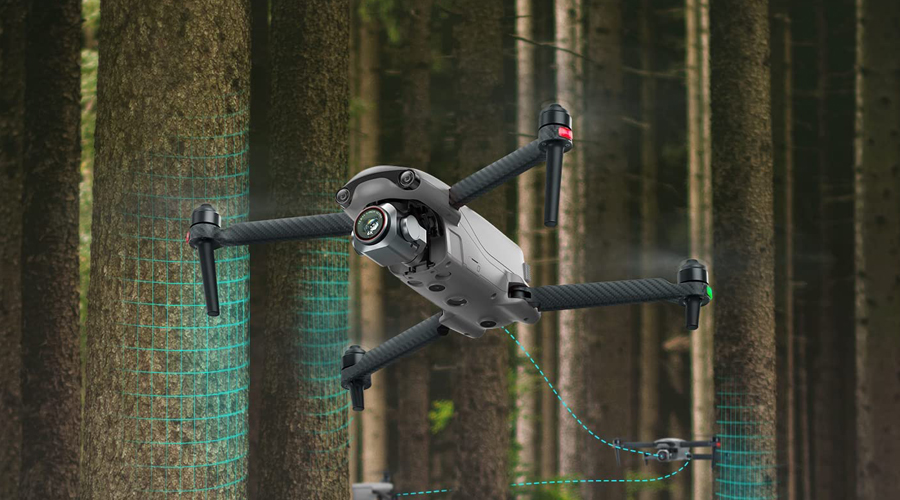
Key features
| Key features | |
| Flight time | 40 minutes |
| Battery capacity | 6175 mAh |
| Battery weight | No info |
| Takeoff weight | 820 grams |
| Video resolution | 6K @ 30 fps / 4k @ 60 fps |
| Camera features | Adjustable aperture (f/2.8 to f/11), Up to 16x digital zoom, and 3x lossless zoom at 1080p, HDR, AEB |
| Flight and camera modes | Rocket, Fadeaway, Orbit, Flick, HyperLapse, Panorama, SkyPortrait, Dynamic Track, SonarSound |
| Safety features | Three-way obstacle avoidance |
Pros
- Ultra-portable design
- Professional-grade camera
- Obstacle avoidance system
- Cheaper than Mavic 3
- Does not have the GeoFencing feature
Cons
- Expensive
- Some camera modes only work in Auto mode
- No automatic navigation through obstacles
Capable of flying for up to 40 minutes on a single battery cycle, the Autel Evo Lite is an ultra-portable drone that is in the same weight class as the DJI Mavic 3. It has a camera that can record 6K video at 60 fps through a 20 MP 1-inch sensor. The camera has an adjustable aperture but some of its features, such as HDR and AEB, are not accessible when shooting in Manual mode.
The Evo Lite Plus has many of the typical automatic camera and flight modes that you will expect from drones in this price range. It can follow subjects automatically, create HyperLapse videos, or cruise along a set flight path. There are plenty of tricks that the drone offers for those who are keenly into aerial photography.
The drone comes with obstacle avoidance sensors in the forward, rear, and downward directions. However, there is no feature that will automatically navigate the drone through obstacles – it simply stops and hovers in place when a collision is imminent.
For about $1500 for the bundle that includes the basic accessories, the Autel Evo Lite Plus is still considerably expensive but not as expensive as the DJI Mavic 3.
4. Autel Evo II Pro
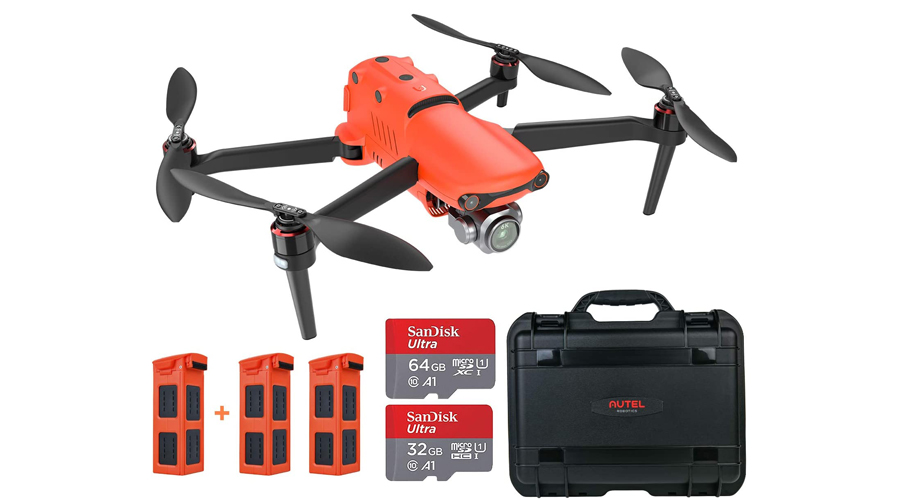
Key features
| Key features | |
| Flight time | 40 minutes |
| Battery capacity | 7100 mAh |
| Battery weight | 335.5 grams |
| Takeoff weight | 1191 grams |
| Video resolution | 5.1K @ 50 fps / 4K @ 120 fps |
| Camera features | Adjustable aperture (f/2.8 to f/11), AEB, 120 Mbps bitrate, Up to 3x lossless zoom, and 8x hybrid zoom |
| Flight and camera modes | AI-enhanced Dynamic Track, Parallel Track, Tripod Track, Gesture Control, Orbit, Waypoint |
| Safety features | Omnidirectional obstacle avoidance |
Pros
- Ultra-portable design
- Suitable for professional work
- Obstacle avoidance system
- No GeoFencing feature
- Interchangeable cameras
Cons
- Very expensive
- Relatively heavy drone
Despite sporting the usual ultra-portable design, the Autel Evo II Pro is a heavyweight as far as ultra-portable drones go. At almost 1.2 kilograms, it is clear that Autel has packed a lot of hardware into this drone. This includes the super-sized 7100-mAh battery that gives the drone up to 40 minutes of total flight time.
As Autel’s entry into the market for professional drone users, the Evo II Pro has some of the best camera specs available today. A 1-inch CMOS sensor allows the recording of 6K videos at 30 fps and 4K videos at 60 fps. It is capable of HDR, AEB, and HyperLight mode, and has an adjustable aperture. There is also the option to store photos as DNG, giving more post-processing flexibility.
The AI-Enhanced Dynamic Track of the Evo II Pro can keep track of a moving subject, follow them automatically, and avoid obstacles during flight. This is likely one of the more powerful features of this drone and is very handy for capturing action shots.
The Evo II Pro also allows its RGB camera to be swapped out for a thermal imaging camera. This level of versatility makes the drone very suitable for enterprise applications. In any case, it seems that enterprise users are the market that Autel is targeting with this drone – it costs about $2000, after all. It is not a drone for everybody, but it is easily one of the most capable drones available today.
5. Skydio X2
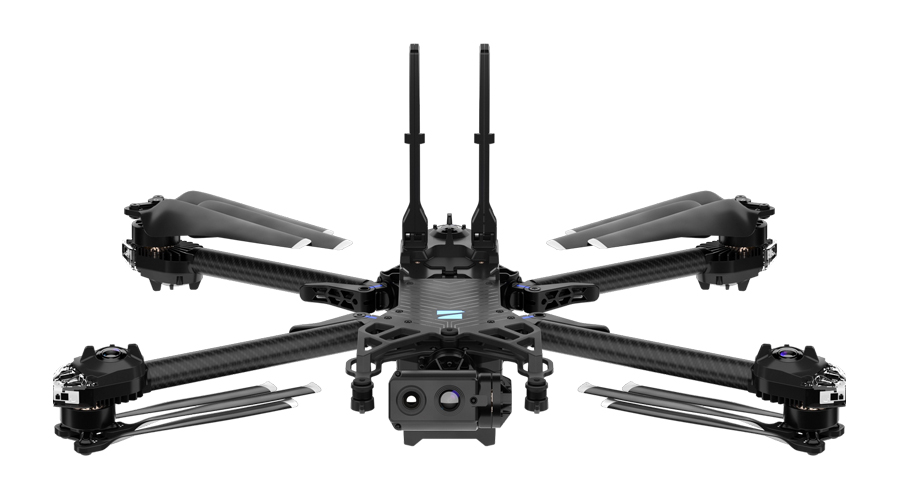
Key features
| Key features | |
| Flight time | 35 minutes |
| Battery capacity | No info |
| Battery weight | No info |
| Takeoff weight | 1325 grams |
| Video resolution | 4K @ 60 fps |
| Camera features | Up to 100x digital zoom, option for Color/Thermal camera |
| Safety features | Omnidirectional obstacle avoidance |
Pros
- Rugged and heavy-duty build
- Two payload options
- Designed for autonomous flight
Cons
- Very expensive
- Only for enterprise users
The Skydio brand has become well-known for autonomous drones with top-of-the-line situational awareness aided by AI navigation. The X2 is at the higher end of the Skydio line of drones, both in terms of technology and features. As such, it’s hard to imagine this drone having a market outside of enterprise users.
The 35 minutes of flight time of the X2 already put it at the top of the list of Skydio drones, at least when it comes to flight time. It still bears the typical ultra-portable design with foldable propeller arms. However, this drone is definitely not lightweight on account of all the hardware inside it.
The key feature of the Skydio X2 is its array of six 4K navigation cameras. This allows the drone to detect its immediate environment, feeding information to the onboard AI for safe and autonomous navigation. This feature is one of the top reasons for the Skydio X2 being an excellent drone for industrial inspection, search and rescue, and law enforcement incident response.
The construction of the Skydio X2 is appropriately heavy-duty with the use of magnesium and carbon fiber composites on the frame elements. This is a drone that can definitely take a beating.
Features-wise, the Skydio X2 is one of the best drones on this list. It is a highly capable and intelligently designed drone that is befitting of its marketing as an enterprise-level drone. However, it certainly caters to a niche market that can afford drones that cost more than $10,000.
6. DJI Mavic Air 2
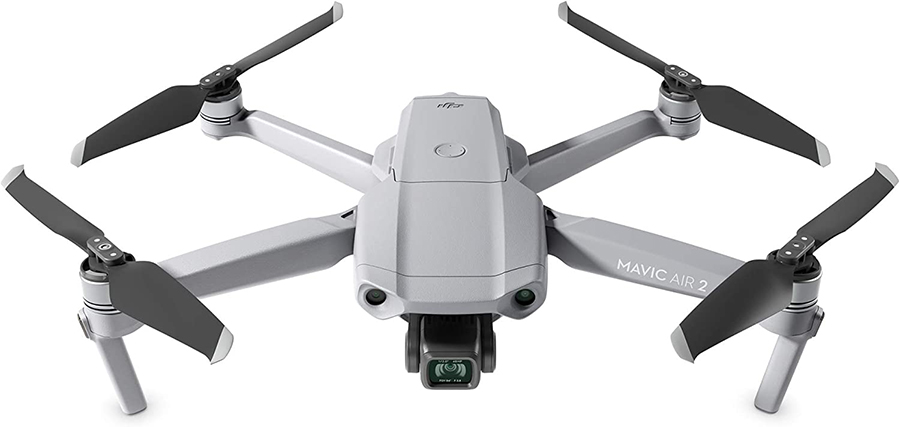
Key features
| Key features | |
| Flight time | 34 minutes |
| Battery capacity | 3500 mAh |
| Battery weight | 198 grams |
| Takeoff weight | 570 grams |
| Video resolution | 4K @ 60 fps |
| Camera features | HDR, AEB, Fixed aperture (f/2.8), D-CineLike Color Profile |
| Flight and camera modes | Panorama, Sphere, Hyperlapse, FocusTrack, Spotlight, Active Track, Points of Interest |
| Safety features | Obstacle avoidance with APAS 3.0 |
Pros
- Ultra-portable design
- Relatively inexpensive
- Obstacle avoidance system
Cons
- Flight time barely reaches 30 minutes
- Comes with automatic GeoFencing
- Coverage of obstacle avoidance is limited
- Relatively outdated features
The Mavic Air 2 was launched more than 2 years ago, but it still bears mentioning in a list of long flight-time drones. Despite the small battery capacity, the drone can fly up to a maximum of 34 minutes, owing to its lightweight build. Since this is an older drone, you can likely buy this today for about $600 or less.
The Mavic Air 2 proved to be one of the most commercially successful drones from DJI. It offered a unique combination of an ultra-portable design, a 4K camera, mechanical gimbal, and beginner-friendly flight controls.
This drone also comes with an obstacle avoidance system aided by the APAS feature for automatic navigation – quite a rare feature for a mid-priced drone. However, take note that this obstacle avoidance system is not omnidirectional. There are blind spots that you will have to keep track of, especially when using any of the drone’s automatic camera modes.
The drone offers plenty of flight and camera modes that can come in handy for either professional or casual aerial photography. The Focus Track and Active Track features are particularly useful for capturing action shots.
The Mavic Air 2 remains an excellent drone, but there is no doubt that some of its features have become outdated. DJI has since released better versions of its obstacle avoidance system and subject tracking camera modes. It also comes with the automatic GeoFencing feature that you should expect from all modern DJI drones.
7. DJI Mini 2

Pros
- Weighs less than 250 grams
- Highly compact
- Inexpensive
- Can shoot 4K videos
Cons
- Can record 4K videos only at 30 fps
- Does not have obstacle avoidance
Rounding out this list is a drone that is much more budget-friendly. At less than $500, the DJI Mini 2 offers excellent value for money with its 4K camera, a mechanical gimbal, and a maximum of 30 minutes of flight time.
As part of the Mini line, the DJI Mini 2 weighs less than 250 grams and can be flown recreationally without needing an FAA registration. Despite the weight, the Mini 2 just barely qualifies for our flight time threshold with a maximum flight time of 31 minutes. Under lots of practical circumstances, this means that the drone will likely fly for less than 30 minutes, so we’re certainly pushing the limit of what qualifies for the list.
The Mini 2 is one of the lightest and cheapest drones that can shoot 4K videos that are stabilized with a 3-axis mechanical gimbal. If you’re interested in aerial photography in any way, you are likely to have a blast with this drone. It also has a couple of fun and interesting camera modes, although the ‘smarter’ ones like subject tracking are noticeably absent.
The lack of an obstacle avoidance system is another important omission in the Mini 2. It certainly seems that DJI had not quite figured out how to integrate such technology in a sub-250-gram drone at this time. Despite this, many users would say that the Mini 2 remains one of the most beginner-friendly drones of recent years.
Final thoughts
Flight time is not a common metric when it comes to picking which drone to buy, but it is actually an important factor to consider. In the past years, most commercial drones can only for around 25 minutes at best. Those technological limitations have since been overcome, and now there is a wide range of drones that can fly for more than 30 minutes at a time.
